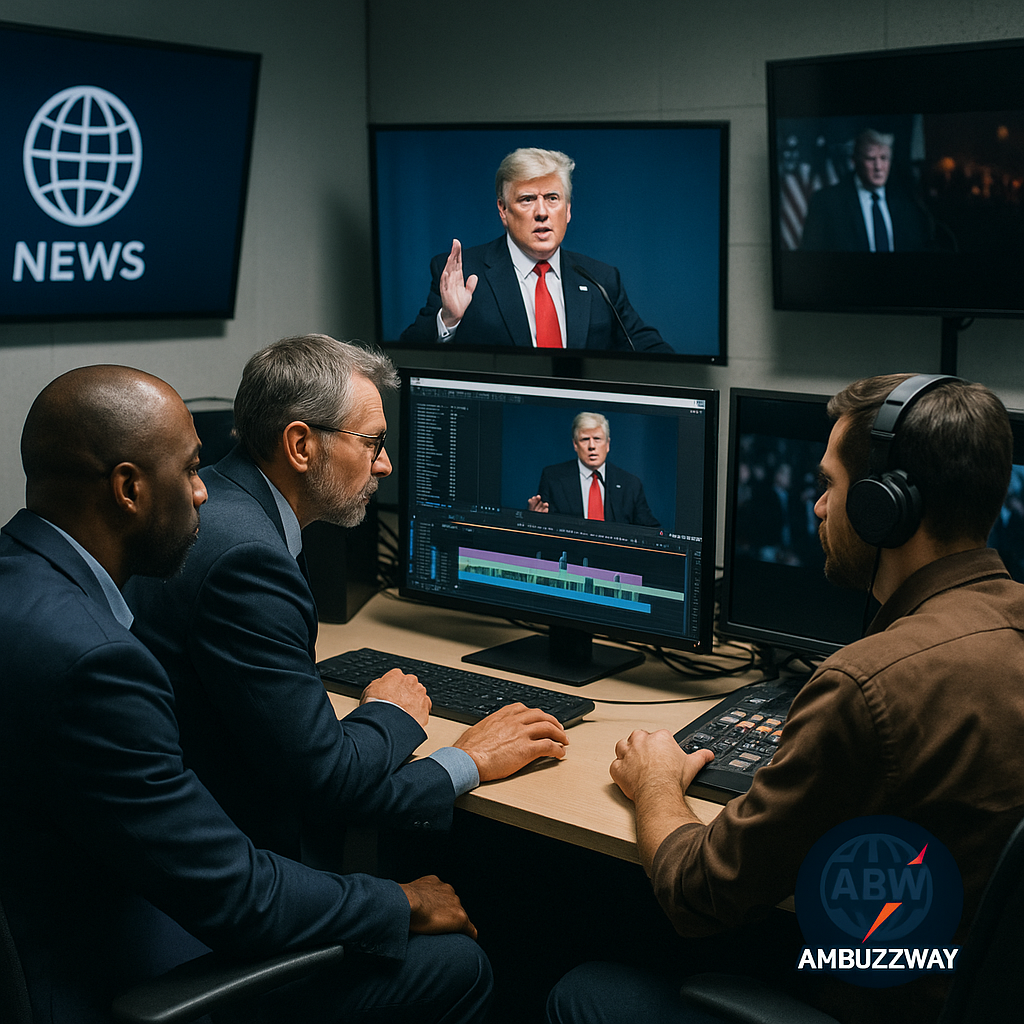Introduction: Trump Tariffs in the Legal Spotlight
The Trump tariffs, a hallmark of the former president’s trade agenda, have landed at the epicenter of a high-stakes battle in the Supreme Court. On Wednesday, conservative justices and their liberal counterparts alike fired pointed questions about the administration’s justification for sweeping import duties. The outcome is poised to reshape not only presidential power but the future of U.S. trade policy, with billions of dollars and the global economy hanging in the balance.
Table of Contents
- Overview of the Trump Tariffs Case
- Key Moments During the Supreme Court Hearing
- Legal Foundation: The International Emergency Economic Powers Act
- The Argument for Broad Presidential Power
- Challenging the Scope of Trump Tariffs
- The Tariffs Versus Taxes Debate
- Economic and Political Implications
- Impact on American Small Businesses
- What’s at Stake for U.S. Trade and Beyond
- Reactions and What Comes Next
- External Sources and Further Reading
Overview of the Trump Tariffs Case
At the heart of this pivotal Supreme Court case are the Trump tariffs, which former President Donald Trump imposed as a means of restoring the American manufacturing base and addressing the persistent U.S. trade deficit. The tariffs, affecting a wide range of imported goods from China, Mexico, Canada, and ultimately most trading partners, were enacted under emergency powers. Yet, their legal basis, economic justification, and sweeping scope have come under fire from affected small businesses, a coalition of states, and, most recently, a skeptical Supreme Court bench.
With a 6-3 conservative majority, the Supreme Court’s engagement with the Trump tariffs is seen as the first significant judicial test of the Trump-era expansion of presidential authority. The case could set a precedent impacting both immediate economic realities and the constitutional separation of powers for decades to come.
Key Moments During the Supreme Court Hearing
During Wednesday’s hearing, the justices’ questions revealed deep concern about the executive branch’s reasoning for blanket tariffs. Justice Amy Coney Barrett pointedly asked whether it was justifiable to impose such measures on countries with no clear “threat” to the U.S. industrial or security base, singling out Spain and France as examples. Trump’s legal team, represented by Solicitor General John Sauer, was pressed repeatedly to differentiate emergency trade policy from general tariff-raising or tax-collecting.
Attending the hearing were Treasury Secretary Scott Bessent, Commerce Secretary Howard Lutnick, and U.S. Trade Representative Jamieson Greer, who all underscored the administration’s willingness to invoke other forms of trade penalties should the court rule against them.
Former President Trump appeared on Fox News after the hearing, declaring the case “one of the most important in the history of our country,” and warning of “devastating” consequences should the administration lose.

Legal Foundation: The International Emergency Economic Powers Act
The administration’s central legal justification for the Trump tariffs rests on the International Emergency Economic Powers Act (IEEPA) of 1977. The statute grants the president authority to “regulate” commerce during a national emergency. Trump invoked IEEPA, first for goods from China, Mexico, and Canada to counteract drug trafficking (classified as an emergency), and later expanded to a much broader range of countries, arguing the persistent U.S. trade deficit posed an “extraordinary and unusual threat” to national well-being.
While prior presidents used IEEPA to impose sanctions, Trump is the first to interpret the act as conferring the right to levy such wide-ranging tariffs as a regulatory—not merely punitive—measure.
The Argument for Broad Presidential Power
The Trump administration has steadfastly argued that IEEPA endows the president with broad leeway to impose tariffs in times of emergency. According to Solicitor General Sauer, denying the president this latitude would expose the U.S. to “ruthless trade retaliation” and could lead to “ruinous economic and national security consequences.”
From the administration’s perspective, emergencies—particularly those threatening the manufacturing base or spurred by global trade imbalances—necessitate swift and expansive action. This rationale was met with skepticism by Chief Justice John Roberts, who questioned the implications of giving the executive branch unchecked authority to levy tariffs “on any product from any country in any amount, for any length of time.”
Challenging the Scope of Trump Tariffs
On the opposing side, a coalition of states and private businesses argue strenuously that Congress never intended to grant the president such “open-ended power to junk” existing trade deals or tariff laws. The word “tariffs” is notably absent from IEEPA’s text, and critics claim that using the law to justify the Trump tariffs constitutes a dangerous leap in executive power over trade.
Attorney Neil Katyal, arguing for impacted businesses, asserted that while the president might close trade entirely using embargoes or quotas, imposing revenue-generating tariffs exceeds the intent of the law. This concern resonated with Justice Neil Gorsuch, who warned against Congress “abdicating all responsibility to regulate foreign commerce.”
The Tariffs Versus Taxes Debate
A crucial legal sticking point throughout the hearing was the distinction between tariffs and taxes. Justice Sonia Sotomayor pointedly told the administration’s lawyer, “You want to say that tariffs are not taxes but that’s exactly what they are.”
The debate is not academic: under the U.S. Constitution, only Congress has the power to levy taxes, and the court has traditionally set clear boundaries on how far that power can be delegated to the executive branch. Whether tariffs imposed by the White House under IEEPA are “regulatory” or “revenue-raising” is not just semantic; it could determine the fate of the Trump tariffs and the billions of dollars already collected.
Justice Brett Kavanaugh summed up the tension: “It does not seem like common sense to give the president the power to block trade, but not to impose a 1% tariff.”
Economic and Political Implications
The economic stakes tied to the Trump tariffs are immense. According to Wells Fargo analysts, an estimated $90 billion in import taxes were collected so far this year, representing about half the total U.S. tariff revenue through September. If the Supreme Court takes months to decide, the cumulative sum could reach an astonishing $1 trillion.
Such vast sums underscore why this legal battle is more than just a theoretical test of executive power. Consumer prices, corporate supply chains, and the U.S.’s global trade posture could all shift dramatically depending on the outcome.
If the administration’s actions are eventually deemed illegal, the government could be forced to refund the billions already paid by importers—a logistical and political “complete mess,” as Justice Barrett warned.
Impact on American Small Businesses
Beyond overarching legal and economic questions, the human cost of the Trump tariffs has been acute for many small businesses. Sarah Wells, CEO and founder of Sarah Wells Bags—a company designing bags for breast pumps and other goods manufactured overseas—paid approximately $20,000 in unexpected tariffs this year. To cope, she stopped importing, suspended product development, and even laid off staff.
Listening to the Supreme Court arguments, Wells said, “I think that they really understood the overreach that I believe the president has done under IEEPA. I got the sense that they have the sense that this has to be reined in.”
American businesses of every size have echoed these concerns, arguing that unpredictable tariff policy makes planning, production, and even viability difficult.
What’s at Stake for U.S. Trade and Beyond
The Trump tariffs case is a crucible for far more than just import taxes. At stake are foundational issues:
- Who controls U.S. trade policy—the president or Congress?
- Where are the boundaries of emergency powers?
- What are the constitutional norms for taxing authority?
Globally, America’s trading partners are watching closely. Widespread tariffs—and the legal precedent for future presidents to impose them arbitrarily—could reshuffle longstanding alliances, provoke retaliatory measures, and undermine the fabric of international trade agreements painstakingly built over decades.
Reactions and What Comes Next
Wednesday’s Supreme Court hearing lasted nearly three hours, drawing a full gallery and underscoring the justices’ recognition of the issues’ gravity and complexity. Three lower courts have already ruled against the administration. If a Supreme Court majority sides with Trump, it will upend these rulings—and set the stage for new battles over presidential authority.

